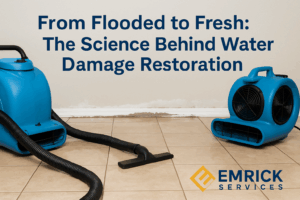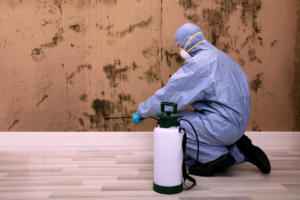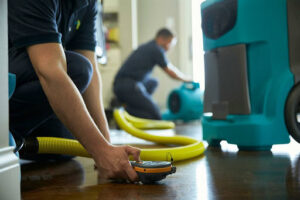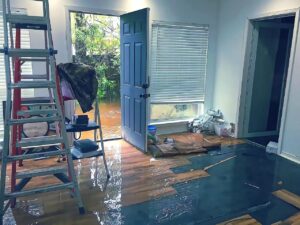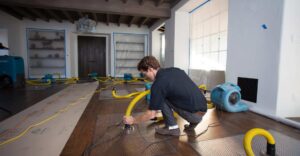There are few things worse than walking through the aftermath of a flood from a busted pipe or bad storm—especially if you’ve just returned from a wonderful vacation to find your living room or office partially underwater.
Once the water level subsides, the real job begins; assessing and dealing with the damage. Damage to the physical structure of your home is usually apparent. However, determining which possessions are savable can be more challenging. Many factors, like the type of water damage and length of saturation, come into play.
Regardless of the circumstances, you’ll have a better chance of saving specific types of water-damaged items if you act quickly and follow the advice in this article.
Assessing the Water Damage
When it is safe to enter your flood-damaged spaces, quickly move the unaffected items to a completely dry location and do the following:
Floodwaters cause extreme damage to books and documents. In most cases, you should attend to them first, unless they are heavily saturated or too damaged to be salvageable. If the water damage is extensive, focus on the items with the most value to you first.
Photos and Documents
Unfortunately, water often saturates, stains, discolors, and creases most paper goods, like books, photographs, and important documents. These are also often the items that homeowners most want to save.
Photos and books may have sentimental value, while certain documents can be important, and difficult to replace. If you re-enter your home hours or days after the initial water damage occur and find that your photos or important papers are sitting in water, you might assume that all hope is lost. But don’t give up on those photos and documents too soon, because there are ways to save some of them.
As soon as possible, you should:
When you attempt to save your photos, start with the ones with no digital backup or negatives; the faster you start to dry them out, the better the chance of saving them. You can place unframed prints on non-printed paper towels away from direct sunlight. If possible, remove pictures from frames as you prepare to dry them.
Textiles
Fortunately, many types of fabric and material can endure an extended period of being soaked in chemical-free water. This fact means you can save some of your wardrobe and upholstered furniture. To start the recovery process, separate the restorable clothing and furniture from the destroyed items. Then, clean these possessions with hot water, detergent, and bleach. Using a steam cleaner is the best way to remove moisture from upholstered furniture. After completing that step, thoroughly clean the furniture with an upholstery detergent and use distilled water to rinse.
Electronics
Many people assume that water and electronic equipment contact means trouble and loss. However, since a lot of electronic equipment is water-resistant these days, there is a better chance that some of your electronics can survive water damage. Most unplugged electronic items are more savable than plugged-in devices and components, especially when it comes to recovering data.
The first step is to turn off your electronic possessions and disconnect them from the power source. Next, take out the battery and any connected devices. Then, use soft fabric to dry the equipment thoroughly. Your next step is to position the device in a bowl of uncooked rice. This method will extract moisture and prepare your device for examination by a professional repair person to save your data. While your electronic may no longer be usable, you may be able to restore data like digital photos or work documents.
Getting Expert Help
Although you can save some of your water-damaged belongings on your own, you can optimize your results by seeking the assistance of a professional restoration service like Emrick. This Louisville, Kentucky-based restoration company brings years of experience helping thousands of people save their water-damaged property in their homes and businesses. If your home has suffered from water damage, consult your insurance company to request Emerick. Our water damage experts can help you salvage your belongings where possible, and repair the damage to your home.
The Final Tally
Regardless of the reason, losing your belongings is tough, especially when it involves things you hold near and dear. But by acting swiftly, you can lessen the loss from water damage and possibly save some of your irreplaceable possessions.
It also helps to know your not dealing with this situation alone. Your insurance company and Emrick can be a great asset in these unfortunate situations. To learn more about how we can help you to salvage your belongings and restore your home after water damage, contact us here.



